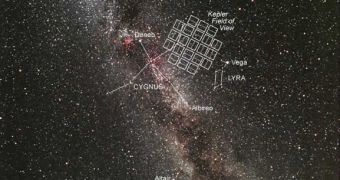Having already identified 1,235 exoplanetary candidates, the NASA Kepler Telescope has already proven its worth many times over. Officials at the American space agency are now considering methods of extending its mission by at least a few years.
At this point, the instrument is scheduled to be retired from active duty in November 2012, but NASA is fighting hard to have its mission time extended by as much as possible. Kepler is constantly surveying a batch of around 150,000 stars in the night sky.
As its sensitive detectors are pointed at these objects, the telescope monitors for subtle variations in the stars' brightness, which may be indicative that a planet is passing in between them and the telescope.
If sufficient relevant data are acquired, then the information is sent to ground-based observatories, whose job is to verify the findings and find our as much as possible about the target exoplanets.
According to officials at the American space agency, the mission would require around $20 million per year to keep going. The instrument itself took $600 million to construct, and it was launched in 2009.
“I think the discoveries we're making are showing what could be done if we continue to extend it. So we're hopeful, but there's no guarantee,” explains Kepler deputy project manager Charlie Sobeck. He is based at the NASA Ames Research Center (ARC), in Moffett Field, California.
Until now, the observatory mostly identified gas giant-class extrasolar planets, bodies that are either the size of Jupiter, or large. Most of these objects orbit in a tidally-locked state, very close to their parent stars, Space reports.
However, the mission's main objective is to find Earth-sized exoplanets. These objects orbit at just the right distance from their stars so that their temperature ranges allow for the existence of liquid water on their surfaces. Water and warm temperatures are absolutely necessary for the development of life.
“What we're seeing is this trend – the smaller the planet, the more of them there are. That's great news for the idea of finding Earth-like planets, or Earth-size planets. Once you have Earth-size planets, all it has to do is be in the right orbit, and it's habitable,” Sobeck reveals.
“In budget-tightening times, you want to get the very best value for your money. And a great way to get value for your money is to extend missions that are working beautifully and which have a team in place, and which have basically zero risk,” comments Greg Laughlin.
The expert holds an appointment as an astronomer with the University of California in Santa Cruz (UCSC).

 14 DAY TRIAL //
14 DAY TRIAL //